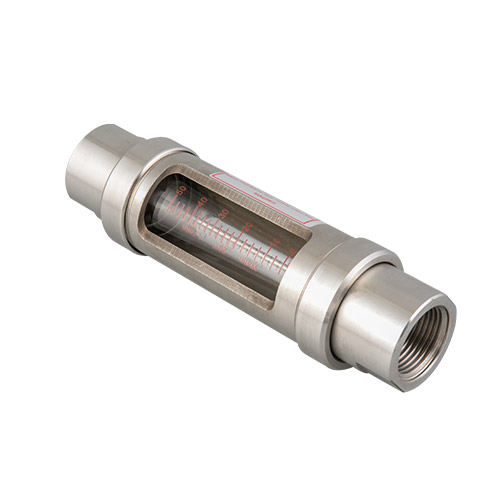According to the different types of applied magnetic field, electromagnetic flowmeters mainly have two types: DC type and induction type. The external constant magnetic field B of the direct current electromagnetic flow meter is perpendicular to the tube axis, and two electrodes are installed at C and D to measure the electromotive force U induced by the fluid traversing the magnetic field. The flow rate Q can be obtained by the following formula:Q=1/K.(UA/Bd)
In the formula, A is the pipe cross-sectional area; d is the pipe diameter; k is the correction coefficient, which is used to correct the influence of factors that are not considered when the formula is derived (such as the fact that the flow velocity in the flowmeter pipe is not uniform). In normal flow meters, k is about 0.8, but for electromagnetic flow meters of specific sizes and for specific working conditions, the volume method (volume flowing through a certain period of time) should be used to calibrate the value of k. The magnetic field can be generated by a permanent magnet, and the magnet material is generally an aluminum-nickel-cobalt alloy. When the flow is large, due to the large pipe diameter, an iron-core excitation winding is used, and a constant direct current is passed through it to generate an approximately uniform magnetic field.
Induction electromagnetic flowmeter In the case that the temperature of the measured fluid is too high or has a strong corrosive effect on the electrode, an induction electromagnetic flowmeter can be used. A and B are two AC excitation windings with equal turns (the cross section is drawn in the figure). The windings are connected in series, but their current directions are opposite. When the fluid is stationary, the resultant magnetic flux passing through the induction coil C is zero, so there is no induced alternating electromotive force in the coil. When the fluid flows, the alternating electromotive force is generated in the induction coil, and its magnitude is proportional to the flow velocity. Based on this principle, there are many modifications. For example, use an excitation winding, and install an induction coil in the opposite direction on both sides of its symmetry and connect them in series. When the fluid flows in series, the magnetic field lines move in the direction of the flow, so that the electromotive force in the induction coils on both sides is not zero. Can indirectly indicate the size of the flow.
There are no other parts in the pipeline of the electromagnetic flowmeter, so in addition to measuring the flow of conductive fluids, it can also be used to measure the flow of non-conductive liquids of various viscosities (in which easily ionizable substances are added). Electromagnetic flowmeters are often used in the nuclear energy industry.







 English
English 中文简体
中文简体 русский
русский España
España